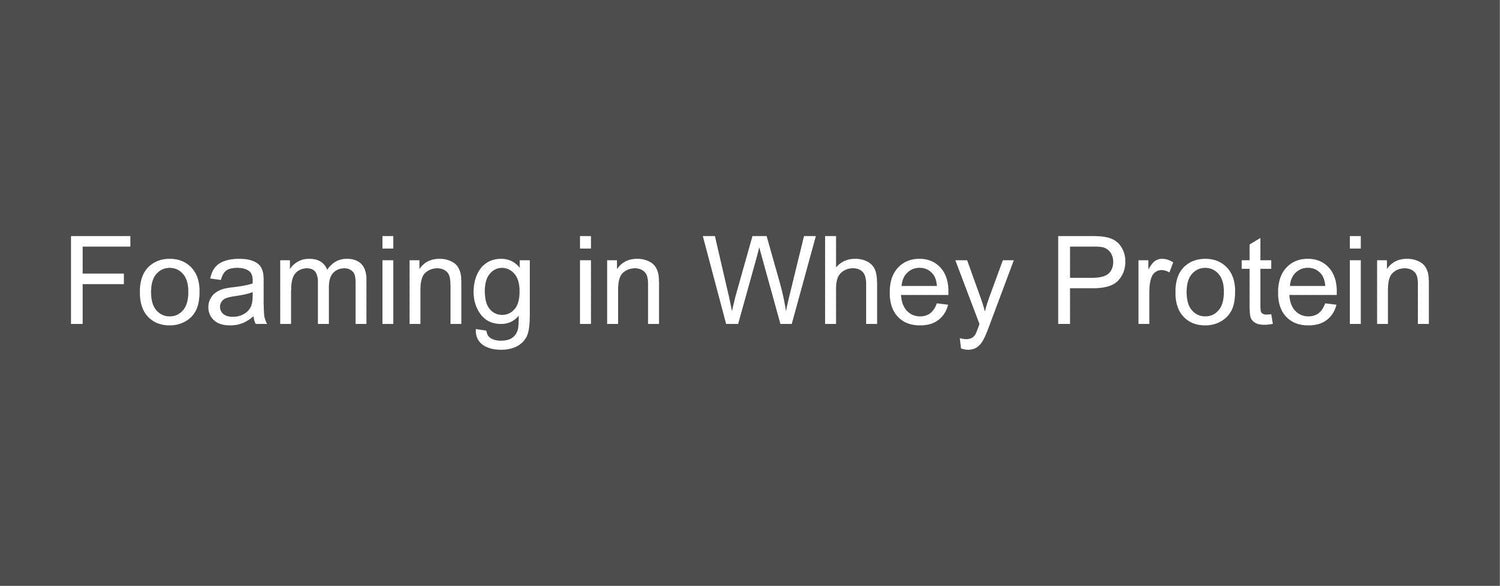Sometimes, the healthy choice what you make may not come with the luxury of being excellent in everything. This is so very apt to the foam/frothiness in Whey Protein shake. The popular Whey Protein supplement though comes with the incredible health benefits and has many merits to its credit, you’ll find it a challenge to combine it in liquids and to prevent the unwanted foaming.
Read on to know the mechanism of foam formation, the best ways to avoid it and get the smoothest protein shake, every time.

What Exactly Is Foam?
Foams may add to the appearance and freshness in certain beverages like coffee, but they are unacceptable and undesirable in certain juices, vegetable oils, syrups and protein shakes. In simple words, foam is an object that is formed by trapping pockets of gas in a liquid. Basically, the dispersion of gases in the liquid is referred to as foam/froth. Foam can otherwise be considered as the aerated microbubbles.
Most of them who use Whey Protein powder often complain that when they put protein powder in their shaker bottle, add water and shake it vigorously, they end up with a foamy protein drink that seems undesirable. The foam may often lead you to get discouraged to drink the protein shake! Don’t worry! The foam although isn’t a major problem, it can cause excessive air and bloating when consumed, which is never inevitable.
Whey Demonstrates Good Solubility
Whey Protein due to its hydrophilic nature (ability to bind to water) demonstrates good solubility over a wide range of pH which is what makes it desirable for use in fluids and beverages.
If you have noticed, foaming is more common with Whey Protein Concentrate or Whey Isolate which have absolutely no fillers (Thickening agent) and are in their pure form. Your mass gainer or products like protein blends will produce less froth since they have different ingredients and not just a single protein. Many commercial brands add anti-foaming agents like polydimethylsiloxanes or oil-based defoamers or even the binding agents like gelatin or egg protein to make thick consistency shakes that will avoid foam.
Let’s Understand The Mechanism Of Foam Formation By Applying Science
Proteins are amphiphilic containing both hydrophobic and hydrophilic ends in the same molecule. They are long chains of amino acids held together by peptide bonds. Certain common factors that lead to foaming include vigorous mixing, brisk stirring and surface active components (surfactants) that reduce the surface tension (the tendency of the fluid surface to shrink to the minimum surface area).
When Whey Protein shakes are stirred vigorously, the amino bonds loosen, and the chain partly unwinds, as such the hydrophilic and hydrophobic ends get exposed. While the hydrophobic ends reach out for the air, the hydrophilic ends stay in the water, and then the proteins coagulate in a structure that holds onto air bubbles.
In most cases, foaming occurs because of a poor preparation technique, it is very simple to avoid it.
-
Avoid Using A Blender Or Shaker
Preparing a protein shake in a blender of a shaker may help to eliminate lumps and give you a smooth drink, but this method of preparation will invite a lot of air bubbles which causes foam. Some protein powder which contains added binding agents in them are unlikely to foam with this technique, but the protein powder with no fillers will foam with this method. Since air is essentially non-polar, an ordering of the water molecules adjacent to the air cells occurs. -
Use A Normal Glass Instead Of A Shaker
Using a normal glass to prepare a protein shake will lessen your efforts in making a foam-free shake. Simply, pour the protein powder into the glass, add water on top and then mix them both with a spoon or fork gently until it completely dissolves. This method will give a foam-free protein shake. -
Prepare Your Shake Before Your Workout
This is yet another feasible option for you. Prepare your protein shake before your workout so that you give it the time for the foam to settle and by the time you are done with your workout, the foam would have disappeared. -
Mix The Protein Powder Little By Little
If your normal practice is to mix one scoop of protein powder at once with water in a shaker, try avoiding it. Let’s make a little modulation and mix the powder little by little with water instead of all at once. This method will create a lot less froth comparatively. -
Use Lukewarm Water/Milk
The temperature of the fluid has an impact on foam production. Generally, mild water or lukewarm water or milk will reduce surface tension and lead to less or no foam. Add 1 scoop of the protein powder to 250 ml of water/milk and mix it gently and not vigorously. This method will get a smooth foam-free protein shake.



